Laser Tattoo Removal in Warsaw
Search and Compare the Best Clinics and Doctors at the Lowest Prices for Laser Tattoo Removal in Warsaw

Find the best clinics for Laser Tattoo Removal in Warsaw
With Medijump you can browse 4 facilities offering Laser Tattoo Removal procedures in Warsaw. The cheapest price available is $38 in Krakow, Katowice
Laser Tattoo Removal in Poland
Price: $ 38
Laser Tattoo Removal in Krakow
Price: $ 38
Laser Tattoo Removal in Warsaw
Price: $ 205
Vietnam offers the best prices Worldwide
Price: $ 3
From 20 verified reviews
Marcelina Mocarska, 07 March 2020
I volunteered to AGklinik. My goal was to remove discoloration on the face (hormonal, after pregnancy) and breast augmentation. The doctor proposed a pico laser and liposuction + transplantation of belly and thigh fat in the breast. Initially, I wanted implants, but I'm glad that the doctor encouraged me to liposuction and fat transfer, because thanks to that I "lost weight" here and there :) Both treatments were carried out under general anesthesia. Fantastic service before the operation (all information and contact with the clinic) and postoperative care - the pain was not particularly bothersome. It's nice that the doctor gives you alternative ideas that come with :) greetings :)
From 13 verified reviews
Kris Lagerfield, 20 September 2020
Profesjonalista w każdym calu !!! Lekarz z prawdziwego powołania który jest fachowcem o wielkim sercu . Jest to jeden z lepszych fachowców w swojej dziedzinie !!
Klinika Krajewski Dr n.med. Maciej Krajewski, located in Pulawska, Warsaw, Poland offers patients Laser Tattoo Removal procedures among its total of 14 available procedures, across 3 different specialties. Currently, there's no pricing information for Laser Tattoo Removal procedures at Klinika Krajewski Dr n.med. Maciej Krajewski, as all prices are available on request only, whilst the national average price is approximately $108. All procedures and treatments are undertaken by just a small team of specialists, with 2 in total at the Hospital, and they are not accredited by any recognized accreditations institutes
Health Poland Health Travel & Treatment in Poland, located in Pulawska, Warsaw, Poland offers patients Laser Tattoo Removal procedures among its total of 33 available procedures, across 7 different specialties. Currently, there's no pricing information for Laser Tattoo Removal procedures at Health Poland Health Travel & Treatment in Poland, as all prices are available on request only, whilst the national average price is approximately $108. All procedures and treatments are undertaken by just a small team of specialists, with 3 in total at the Hospital, and they have multiple recognized accreditations, including: NIL - Polish Chamber of Physicians and DentistsOIL - Okregowa Izba LekarskaPTChPRiE - Polskie Towarzystwo Chirurgii Plastycznej, Rekonstrukcyjnej i EstetycznejPTS - Polskie Towarzystwo Stomatologiczne
Compare Before & After Photos of _procedure_photos.phpLaser Tattoo Removal


Front view
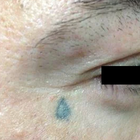
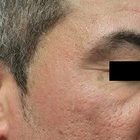
Half-side view
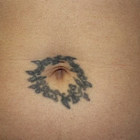
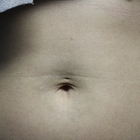
Front view
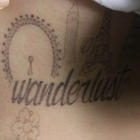
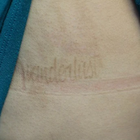
Front view
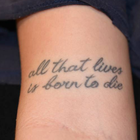
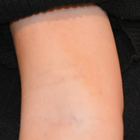
Front view
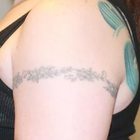
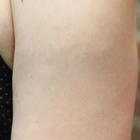
Full-side view
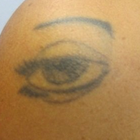
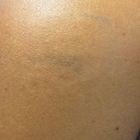
Front view
WHY US?
At Medijump, we're making medical easy. You can search, compare, discuss, and book your medical all in one place. We open the door to the best medical providers worldwide, saving you time and energy along the way, and it's all for FREE, no hidden fees, and no price markups guaranteed. So what are you waiting for?

Free

Best Price

Widest Selection

Risk-Free
What you need to know about Laser Tattoo Removal in Warsaw

Laser tattoo removal is a technique to eliminate an unwanted tattoo with little to no side effects. It works by breaking up the pigment colors with a high-intensity light beam. You can undergo a laser tattoo removal if you regret having a tattoo, unhappy with the appearance of your tattoo, the tattoo causes infection, or you have an allergic reaction to the tattoo. Once you've done laser tattoo removal, your unwanted tattoo will be gone forever.
Grasping the notion that Laser Tattoo Removal is not a one-off activity, but instead encompasses an array of treatments distributed over multiple weeks, is crucial. Variables like the dimensions, hue, tattoo positioning, along with the person's general well-being determine the count of requisite sessions.
What is the cost of Laser Tattoo Removal in Warsaw?
In Warsaw, the Laser Tattoo Removal cost can greatly fluctuate. It hinges upon several considerations such as the size, emplacement, tattoo color, and the amount of needed therapy sessions. Other influencing factors are the laser technology utilized and the reputation of the clinic.
The majority of clinics in Warsaw extend payment schemes and financing aids to render the process more financially manageable. Bear in mind, though, that Laser Tattoo Removal isn't typically included in medical insurance coverage as it's deemed a beauty-related procedure. Irrespective of the expenditure, it is vital to give precedence to first-rate care and the proficiency of the healthcare staff over cost-effectiveness.
What does a Laser Tattoo Removal Procedure Involve?
The process of Laser Tattoo Removal entails directing particular wavelengths of laser light on the tattooed part of the skin. A highly specialized laser is chosen depending on the colors present in the tattoo for carrying out this technique. The light pulses penetrate the skin's topmost layers to reach the tattoo's pigment. This energy from the light leads to the fragmentation of the tattoo ink into minute particles, which are gradually flushed out by the body's immunity system.
Most people do not need anesthesia, but you can ask for a topical or local anesthetic from your doctor. During the procedure, you will have to wear protective eye shields. Then, your doctor or technician uses a laser to bring pulses of intense light to the top layers of your skin and only the tattoo pigment will absorb this light. Depending on the size, color(s), and age of your tattoo, you might need more than one treatment session.
How Long Should You Stay in Warsaw?
You can leave Warsaw after your tattoo removal procedure. However, it may take several treatments to completely remove the tattoo. Given that everyone reacts distinctively, the process might necessitate anywhere from 3 to 10 visits. The interval between each treatment is around 7 weeks to allow the treated area enough time to heal. You are free to retreat to your home, or a place of your choosing, in between these sessions. This sequence persists until your tattoo is completely removed. Nevertheless, it is critical to resume your journey to Warsaw for each forthcoming Laser Tattoo Removal.
What's the Recovery Time Like?
You will feel pain and discomfort for around a week, but your skin will completely heal in around six weeks. You should be able to go to work as long as you do not feel any pain or discomfort that interferes with your life.
Right after every session, you may observe minor swelling and a reddish tint on the manipulated area. These indications normally wane within a short span that can range from a few hours to two days and can be tamed with chilled packs and popularly accessible pain relievers. Evading exposure to sunlight and demanding activities in the initial few days is of utmost importance to forestall probative issues.
What sort of Aftercare is Required for Laser Tattoo Removal Procedures in Warsaw?
Your doctor will give you aftercare instructions; make sure to follow the instructions. Keep the treated area clean, do not soak the area, and try to avoid popping blisters. If the treated area itches, apply hydrocortisone cream. Avoid smoking as it can reduce the effectiveness of laser tattoo removal by around 70%.
The treated region should also be protected from the sun and covered with a high SPF sunscreen because the skin will be more susceptible to UV deterioration. Additionally, avoiding activities that could result in significant sweating or close contact with the area of the skin that is receiving treatment is advised. You must avoid the impulse to pick or scratch at the treated area if you want the skin to heal properly. Finally, maintaining effective healing and general health requires drinking plenty of water and eating a diet that is nutritionally balanced.
What's the Success Rate of Laser Tattoo Removal Procedures in Warsaw?
Laser tattoo removal is the most effective tattoo removal treatment with a success rate of over 95%. It's important to understand that when discussing tattoo removal, the term "effectiveness" typically refers to the degree of tattoo fading rather than complete tattoo removal. The depth, type, and concentration of the ink, the tattoo's colour, as well as the recipient's skin features and overall health, can all have an impact on the final design.
Are there Alternatives to Laser Tattoo Removal Procedures in Warsaw?
Laser Tattoo Removal has evolved into a highly effective strategy for eliminating tattoos, but you're afforded various other alternatives if Laser Tattoo Removal does not align with your requirements. Intense pulsed light (IPL) therapy, for instance, where light pulses are deployed to dissolve the tattoo ink, could be a viable proposition particularly for larger tattoos. However, for heavily inked or deeper tattoo locations, IPL might not yield the desired outcome.
Dermabrasion is yet another alternative. It's a process that employs skin 'sanding' to eliminate the surface and middle skin layers. Compared to laser treatments, dermabrasion can be less comfortable and requires a more prolonged healing duration. In certain instances, it might also be viable to surgically remove the tattoo with a scalpel, but be prepared for the potential of scarring. Therefore, when deciding on the best course of action, it's important to discuss your unique requirements and expectations with a specialist.
What Should You Expect Before and After the Procedure
Before the Laser Tattoo Removal, there will be a discussion with the expert regarding your health history, the treatment information, and your anticipated outcomes. The area on which the tattoo is located must be hygienic and devoid of any ongoing skin issues. A topical anesthesia may be applied during the session for your comfort. The feeling you might experience when the laser is used could be likened to the feeling of a rubber band being flicked against your skin.
Post-treatment, the tattooed section may look inflamed and red, and it could feel a bit warm to the touch and tender. These symptoms should diminish over a few days. It is vital that you adhere to the follow-up care guidelines given by the clinic to ensure the best healing process and outcome. Generally, this requires cleanliness of the area, avoiding direct sun, and abstaining from activities that can irritate the skin. Regular check-ups of your healing process with your expert can assist with timely detection and management of any potential post-treatment issues.
What are Potential Risks of Laser Tattoo Removal?
Laser Tattoo Removal carries some side effects and risks, such as:
- Infection
- Hypopigmentation and hyperpigmentation (treated skin becomes significantly darker or lighter than its surroundings)
- Scarring, bleeding, swelling, and blisters
It's important that you get proper treatment by a reputable doctor to avoid these side effects and risks.
Whilst the information presented here has been accurately sourced and verified by a medical professional for its accuracy, it is still advised to consult with your doctor before pursuing a medical treatment at one of the listed medical providers
No Time?
Tell us what you're looking for and we'll reachout to the top clinics all at once
Enquire Now

Popular Procedures in Warsaw
Prices Start From $28

Prices Start From $6,002

Prices Start From $278

Recommended Medical Centers in Warsaw for Laser Tattoo Removal

- Interpreter services
- Translation service
- Religious facilities
- Medical records transfer
- Medical travel insurance
- Health insurance coordination
- TV in the room
- Safe in the room
- Phone in the room
- Private rooms for patients available

- Interpreter services
- Translation service
- Religious facilities
- Medical records transfer
- Medical travel insurance
- Health insurance coordination
- TV in the room
- Safe in the room
- Phone in the room
- Private rooms for patients available

- Interpreter services
- Translation service
- Religious facilities
- Medical records transfer
- Medical travel insurance
- Health insurance coordination
- TV in the room
- Safe in the room
- Phone in the room
- Private rooms for patients available

- Interpreter services
- Translation service
- Religious facilities
- Medical records transfer
- Medical travel insurance
- Health insurance coordination
- TV in the room
- Safe in the room
- Phone in the room
- Private rooms for patients available

- Interpreter services
- Translation service
- Religious facilities
- Medical records transfer
- Medical travel insurance
- Health insurance coordination
- TV in the room
- Safe in the room
- Phone in the room
- Private rooms for patients available

- Interpreter services
- Translation service
- Religious facilities
- Medical records transfer
- Medical travel insurance
- Health insurance coordination
- TV in the room
- Safe in the room
- Phone in the room
- Private rooms for patients available
Laser Tattoo Removal in and around Warsaw
About Warsaw
As the capital and largest city of Poland, Warsaw continues to charm its visitors with diverse architecture, cultural treasures, stunning outdoor spaces, and superb dining spots. With Poland’s recent emerging popularity in medical tourism, the city has seen an influx of foreign patients coming for its world-class healthcare. The city’s very high standard of living and universal healthcare system are seen as an attractive choice for international medical tourists, particularly those from the surrounding countries. Both the public and private medical centers in this city are equipped with the latest medical technology and are offering a wide range of medical procedures at significantly lower prices than other countries in Europe. The most sought-after procedures in the city are cosmetic surgery, orthopedic, bariatric, and dental treatments.
Popular Parts of Warsaw
Warsaw offers a beautiful blend of old and new. Visitors are welcomed with restored Gothic buildings and modern glass structures standing side by side. One of the most popular attractions is the Palace of Culture & Science, which is a ‘gift of friendship’ from the Soviet Union and is the second tallest building in Poland. As a vast recreation and educational facility, this building is filled with theatres, cinemas, and museums. Most people also come to wander around the streets of the city’s Old Town, the oldest part of the city, to see medieval architecture and visit the Old Town Market Place. Warsaw is also known as the former home of Frédéric François Chopin and visitors are welcome to retrace his steps by strolling around Saxon Garden.
Transport in Warsaw
The main airport is Warsaw Frederic Chopin Airport and it is the largest and busiest airport in Poland that connects with many cities around the world. To get around Warsaw, local buses are available and they’re reasonably priced. Taxis are the most convenient way to get around and are relatively cheap. However, ensure to avoid unlicensed taxi drivers as they will charge more. The safest way to get a taxi is by asking your hotel staff for the number of the taxi company they use. Cycling is also a good way to explore the city.
Visas in Warsaw
Since Poland is a part of the Schengen area, citizens of several countries, including the US, Canada, Australia, and Japan, can stay in Warsaw without a visa for up to 90 days. EU citizens do not need a visa and are allowed to stay indefinitely. Citizens of other countries are required to obtain a visa in advance. A passport valid for at least 6 months is required.
Weather in Warsaw
Summer (June – August) has unpredictable weather with warm temperatures, sometimes reaching 30°C. Autumn (September – November) brings cooler temperatures and more pleasant weather. Winter (December – early March) can be freezing, with the temperatures dropping to -20°C on the coldest days. Spring (late March-May) is characterized by warmer temperatures and less rain.
Additional Info
- Local Currency: Polish Zloty (PLN) is the official currency and 1 USD converts to approx. 3.8 PLN.
- Money & Payments: ATMs are widely available in Warsaw. Credit cards can be used in most restaurants and hotels. Tipping is optional.
- Local Language: Polish is the official language. Most people in tourist areas can speak decent English.
- Local Culture and Religion: Warsaw is a multi-cultural city. Christianity is the largest religion, but other religions are also present in the city.
- Public Holidays: Warsaw celebrates major Christian holidays, such as Christmas Day and Easter. There are also some national holidays celebrated in the city, including Constitution Day and Independence Day.
Popular Searches
- Plastic Surgery in Thailand
- Dental Implants in Thailand
- Hair Transplant in Thailand
- Breast Augmentation Thailand
- Gastric Sleeve in Thailand
- Gender Reassignment Surgery in Thailand
- Laser Hair Removal in Bangkok
- Botox in Bangkok
- Dermatology in Bangkok
- Breast Augmentation in Bangkok
- Coolsculpting in Bangkok
- Veneers in Turkey
- Hair Transplant in Turkey
- Rhinoplasty in Turkey
- Stem Cell Therapy in Mexico
- Rhinoplasty in Mexico
- Liposuction in Mexico
- Coolsculpting in Tijuana
- Rhinoplasty in Korea
- Scar Removal in Korea
- Gastric Sleeve in Turkey
- Bone Marrow Transplant in India
- Invisalign in Malaysia
- Plastic Surgery in the Dominican Republic
- Tummy Tuck in the Dominican Republic
- Plastic and Cosmetic Surgery in Poland
- Rhinoplasty in Poland
- Hair Implant in Poland
- Dental Implants in Poland
- IVF in Turkey



